Emmett Till: the photograph that made a martyr, started a movement
Written by Amy Hema, for an assignment on ‘communicating, consuming, and commodifying evil and suffering’, in ANTH424.
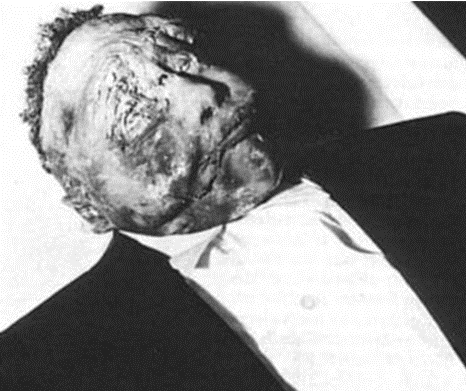
Emmett Till as pictured at his funeral, in an open casket; deformations the results of the violent nature of his race-based murder.
When thinking about images of evil, this photo immediately comes to mind. I was introduced to it eight years ago, and to me it has always been the epitome of evil.
The photo is of a young boy named Emmett Till, who became a martyr for the US Civil Rights movement after his tragic murder.
But how did one tragedy influence a whole country? With a photograph.
The Murder of Emmett Till
Emmett was a 14-year-old African American boy, who in the summer of 1955 travelled from his hometown [1] Chicago to Mississippi. Before boarding the train, he kissed his mother goodbye, unbeknownst to them both, for the last time.
On August 24th Emmett entered Bryant’s market in the small-town of Money.
The interaction that took place in that store has been debated for decades, but what was reported at the time was that Emmett had been inappropriate with and whistled at the white grocery clerk, Carolyn Bryant [1]
Four days after the alleged incident Carolyn’s husband and his half-brother entered the home where Emmett was staying. They kidnapped, tortured and killed Emmett before tying a cotton gin fan to his neck and throwing his body into the Tallahatchie river, where it would be discovered days later. Emmett’s body had been so badly beaten, the only way to identify him was by his father’s signet ring [1]
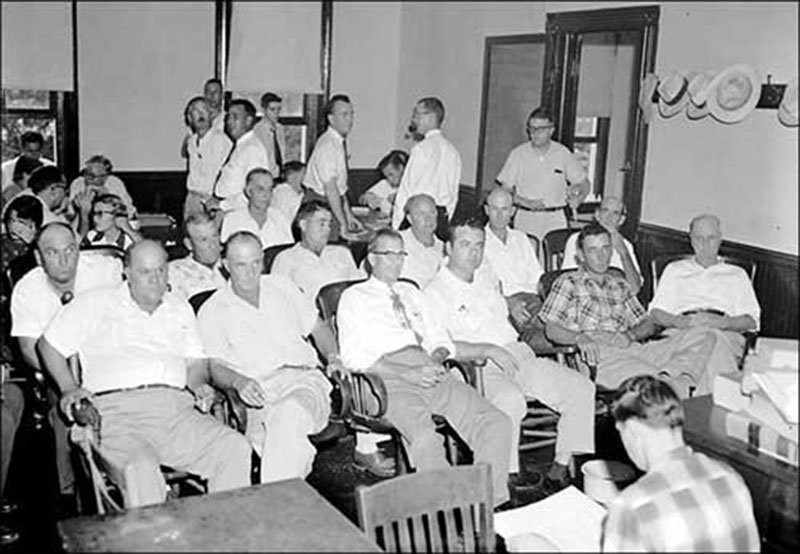
Photograph shows the jury at the trial of two white men, Roy Bryant and J.W. Milam, charged with murdering Emmett Till. 9/20/1955. Courtesy: Library of Congress
Roy Bryant and J W Milam were arrested and charged with murder.
They were tried in front of an all-white jury, in a scene Harper Lee herself could have written. After only an hour of deliberation, both Bryant and Milam were found ‘not guilty’[2].
A photo that incensed a nation
I argue that the reason why Emmett became a ‘martyr’, in the sense of his death taking on wider moral and political meaning, is because this photo of his body exists.
Emmett Till was not the first boy to be lynched. At the time, lynching was part of lived reality of African-American communities in the USA [3]. The difference for Emmett is the proliferation of this photograph. This photo exists because Emmett’s mother, Mamie Elisabeth Till-Mobley, made an incredibly difficult decision; to have an open casket funeral. Mamie had to fight for her sons remains to be returned to her, and when she received his remains, she was told the casket had to remain closed [1]
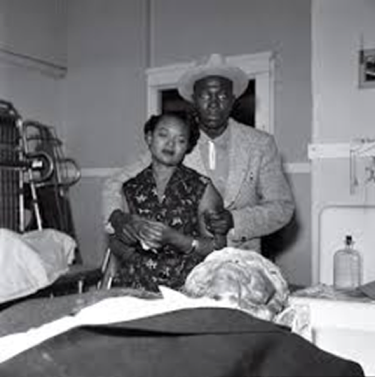
Mamie Till looks stoically over her son. David Jackson (1955). Source: Time: 100 photos http://100photos.time.com/photos/emmett-till-david-jackson NB. In other photos Mamie leans over the casket with an expression of absolute pain and grief.
However, after seeing the horrors that were inflicted upon him, Mamie knew the world had to see what she had seen[4]. The existence of this photo is the enactment of her moral obligation, to a child who could not share his story which needed to be told, and to the world that needed to hear it.
Photos of the body were circulated by Jet Magazine, capturing the brutality of the violence that Emmett had suffered. At the time, these images were circulated within African American audiences only. Being too brutal to publish in mainstream magazines, it would be years before the image became a global phenomenon.
I link this to what anthropologists Kleinman and Kleinman have discussed as the role of suppression in visual representations of suffering[5]. Withholding evidence of suffering denied the public the chance to stand as moral witnesses. The circulation of images like this often by nature only convey one ‘slice’ of a complex reality. However by choosing to not circulate his image, mainstream media outlets were denying and erasing the suffering of Emmett, his family, and the African-American community.
Emmett and the Civil Rights Movement
Kleinman and Kleinman have also argued that images have been used to confront viewers with a moral issue, and call for social action[5]. The photo of Emmett Till is a prime example of moral sentiment being used to rally people toward social justice. Sociologist Joyce Ladner coined the phrase the “Emmett Till Generation” of black activists, to describe the individuals living in the United States who after the death of Emmett Till became heavily involved with civil rights. That term offers a perfect summation of how the image impacted the lives of African Americans[6].
Many consider Emmett’s death and the circulation of the photos to be a catalyst for the civil rights movement, influential activists stated that the death of Emmett had a significant impact on their lives and consequentially their involvement with the civil rights movement. In her memoir, Anne Moody details how the death of Emmett Till made her aware of her own position within society, how after his murder she became afraid of being killed because she was black. Moody went on to describe the rage she felt, at the people who had killed Emmett and the African Americans who, out of fear, stood by and allowed these things to keep happening[7]. Moody’s personal history with the photo demonstrates how moral witnessing, in visual form, not only rallied a generation but created new understandings of how people fit into the world.
Only a few months after the circulation of Emmett’s photo, Rosa parks famously refused to give her bus seat to a white woman, leading to the Montgomery Bus Boycott. When asked why she made that decision she said, ‘I thought of Emmett Till and when the bus driver ordered me to move to the back, I just couldn’t.[4]’
Although Emmett may have not been directly responsible for the civil rights movement, his image was a confrontation of the truth; people could no longer deny that these things were happening and that they could happen to any Black American.
Why does Emmett Till still matter?
Racism still exists within the United States, albeit not in the same way it did 60 years ago. There are no signs separating water fountains or bathrooms. But racism persists in the form of stereotypes, inequality in housing, education and employment opportunities.
Racism in the USA today is the over-representation of unarmed African American teens being killed. Each time there is a killing of a black male in the US, Emmett’s name re-enters the spotlight[8], through his image he has become forever linked with racial violence. Emmett Till was the face of the Black Lives Matter Movement before it existed.
One of the most notorious killings in recent history was that of Trayvon Martin, following the murder of Martin, Emmett Till was once again thrusted into the spotlight. Trayvon and Emmett’s deaths shared a striking resemblance, as the Washington Monthly put it “Separated by a thousand miles, two state borders, and nearly six decades, two young African American boys met tragic fates that seem remarkably similar today: both walked into a small market to buy some candy; both ended up dead.[8]”
The fact that Emmett is still brought up to this day, as a representation of racism and hatred is testament to the power not only of his photo but of images in general, they are lasting, they freeze a moment in time and hold it there. Emmett will never stop being a martyr, because he has been frozen in time as one.
Despite the immense influence of this image, there is still a few glaring questions; sixty years after the circulation of the photo of Emmett, how is it that we are still in the same place? How is it that we are still being bombarded with images of African- American suffering? Have we become, as Frosh put it, desensitised [9]?
We are in a unique period where we can constantly access news and images, in every facet of our lives we are exposed to the suffering of others, but from a position that is so far removed, after a while it becomes harder to empathise. Have we become numb to these killings?
And finally, how many more Emmett Tills will we have to look upon before people change?
References:
[1] See the Documentary: ‘The Murder of Emmett Till’ (2003, PBS).
[2] PBS (n.d.) ‘The Murder of Emmett Till: The Trial of J.W. Milan and Roy Bryant’. PBS: The American Experience. Available at: https://www.pbs.org/wgbh/americanexperience/features/emmett-trial-jw-milam-and-roy-bryant/
[3] In the 75 years leading up to Emmett’s death, it is estimated the over 500 African American’s were lynched within Mississippi, most of them were men accused of associating with white women. https://youtu.be/7uTtNnCw69w?t=426
[4] The Washington Post. ‘Emmett Till’s mother opened his casket and sparked the civil rights movement’. The Washington Post. Available: https://www.washingtonpost.com/news/retropolis/wp/2018/07/12/emmett-tills-mother-opened-his-casket-and-sparked-the-civil-rights-movement/
[5] Kleinman, A. & Kleinman, J. 1996. ‘The Appeal of Experience; the dismay of images: Cultural Appropriations of sufferings in our times.’ Daedalus, 125(1).
[6] Kolin, P.C. The Legacy of Emmett Till
[7] Moody, A. (1968) Coming of Age in Mississippi. Penguin Randomhouse reprint.
[8] Gorn, E.J. (2018). ‘Why Emmett Till still matters’ Chicago Tribune. July 20th. Available: https://www.chicagotribune.com/opinion/commentary/ct-perspec-emmett-till-mississippi-murder-reinvestigation-whistle-white-woman-carolyn-bryant-20180722-story.html
[9] Frosh, P. (2018). ‘The Mouse, the screen and the holocaust witness: Interface aesthetics and moral response’, New Media & Society, 20(1), pp351-368.
Hip-hop Dunedin: An ethnographic soundscape
A soundscape produced by Biruk Mengstu, for ANTH210 (Translating Culture)
About the soundscape:
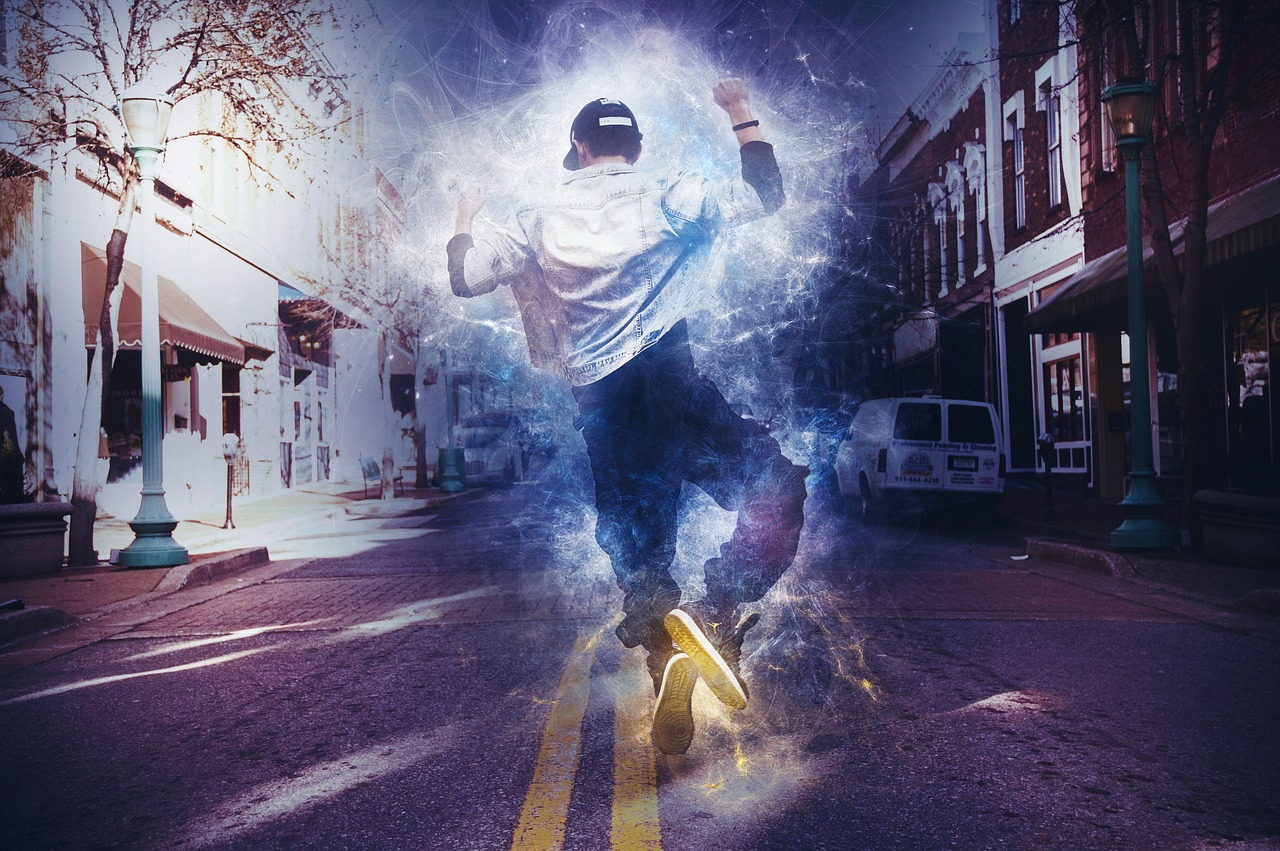 My research question was around the influence of Hip-hop on some students in Dunedin. All these sounds were retrieved from the fieldwork (studio apartment and live underground hip hop showcase) and reconstructed to tell a story of the extent of influence hip-hop has on these students.
My research question was around the influence of Hip-hop on some students in Dunedin. All these sounds were retrieved from the fieldwork (studio apartment and live underground hip hop showcase) and reconstructed to tell a story of the extent of influence hip-hop has on these students.
About the ANTH210 process:
Throughout my high school and university life, I have always been interested in the natural science field. However, I have always wanted to learn more about my surroundings and the social science aspect. When I found out about the ANTH210 paper, I thought it would be an excellent opportunity to challenge myself and to get out of my comfort zone as I have never taken an anthropology paper before.
This paper has opened my mind to a different way of thinking and has shown me that there are so many different cultures that are all around which we sometimes don’t realise. This paper has allowed me to get in touch with my creative side, which I never really had the chance to express before. Overall I enjoyed and learned a lot by being a part of the Anthropology 210 (Translating Culture) class.
The execution of politics: how one photo of a Viet Cong prisoner shaped the war
*Trigger warning: Violent image*
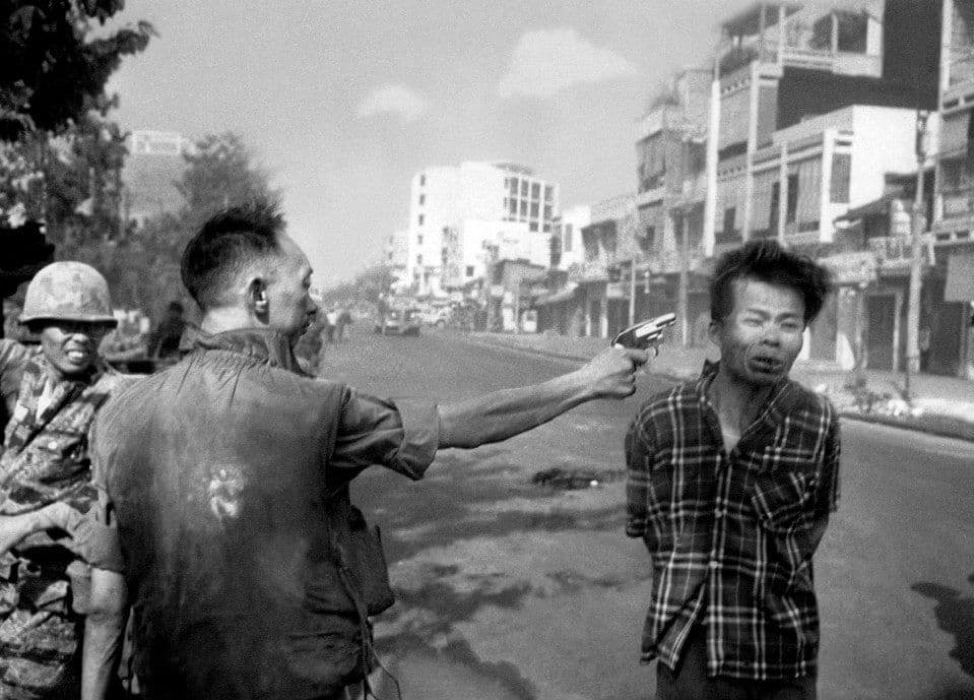
I came across this particular image during my own personal exploration into global politics following World War II, in an online article about American politicians. I was shocked after reading into the caption, to find that in this image the man is already dead, with the bullet either still passing through his head, or having just passed through it.
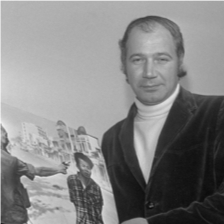 I find this attitude towards this extremely violent situation quite striking. Even with an understanding that extensive exposure can lead to stoicism, it is intriguing to me that one can
I find this attitude towards this extremely violent situation quite striking. Even with an understanding that extensive exposure can lead to stoicism, it is intriguing to me that one canBy capturing and conveying suffering through visual imagery, the photographer becomes a witness of death, but also a moral actor. Adams believed two people were killed in that instant, “the general killed the Viet Cong; I killed the general with my camera”6.
Mobilising Support for Social Action
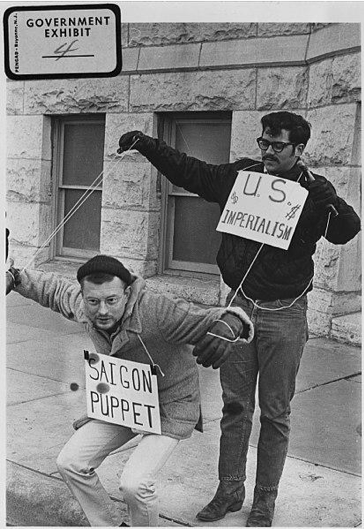 Kleinman and Kleinman5 emphasise that visual representations of evil can be used to promote social action. Indeed this image slowly became an icon for American activism, and to this day serves as a reminder of the atrocities that arise from political conflicts. This photo was a “classic instance of the use of moral sentiment to mobilize support for social action”. A fellow Vietnam War photographer, David Hume Kennerly, put it this way: “I don’t know that it ended the Vietnam War, but it sure as hell didn’t help the cause for the government – one thing I know for sure, anybody who’s ever seen that photo has never forgotten it”.6
Kleinman and Kleinman5 emphasise that visual representations of evil can be used to promote social action. Indeed this image slowly became an icon for American activism, and to this day serves as a reminder of the atrocities that arise from political conflicts. This photo was a “classic instance of the use of moral sentiment to mobilize support for social action”. A fellow Vietnam War photographer, David Hume Kennerly, put it this way: “I don’t know that it ended the Vietnam War, but it sure as hell didn’t help the cause for the government – one thing I know for sure, anybody who’s ever seen that photo has never forgotten it”.6
The image was used to give a glimpse into the reality for those enduring such brutality, and conveyed a powerful intimacy and desperate message to the people of the USA. It is still considered in the USA to be the “Photo That Changed the Course of the Vietnam War”1.
Appropriating Suffering
This image meant that the death of the Viet Cong prisoner would not go unremembered. As Astor says, “this last instant of his life would be immortalized on the front pages of newspapers nationwide”1. However Kleinman & Kleinman5 also discuss how the suffering depicted in an image can be taken advantage of, particularly in the way that it is distributed and consumed. As is stated in their article, the use of an image to ‘right an inhumane situation’ can be inhumane in itself.
The image of suffering above was used by the American anti-war effort to serve a purpose; as a tool in the process of stopping the Vietnam War, but at what cost? The image may have succeeded in saving many lives by cutting the war shorter, however, the insensitive use of the image was disastrous for some.
For the victim’s wife, Nguyen Thi Lop3, the image served a very different purpose than it’s anti-war role in the US. For her, the use of the image played the role of messenger: informing Nguyen of her husband’s death. In a clip years on, Nguyen is recorded saying in Vietnamese that “a friend of mine brought me the newspaper and then I found out what had happened to my husband”.
The reproduction of this image did not allow this widow the privacy or respect that she deserved. It shows lack of understanding, respect and permission required in the distribution of material. Furthermore we can argue that to share the intimate destruction of human life with such a level of triviality (as glancing past it in a newspaper) de-sensitizes, and reduces from the pain of the victim. Kleinman and Kleinman explain:
“Suffering ‘though at a distance,’ is routinely appropriated in American popular culture, which is a leading edge of global popular culture. The globalization of suffering is one of the more troubling signs of the cultural transformations of the current era: troubling because experience is being used as a commodity, and through this cultural representation of suffering, the experience is being remade, thinned out, and distorted”.5
One effect of this, they argue, is the erasure and distortion of the importance of social experiences of suffering. In this case, the image itself can not inherently convey the contextual political systems that produced it; its literal content is simply a violent act between two individuals. Yet re-contextualised as part of the anti-War effort, it did serve to highlight wider political contexts, such that the social response to the image led to not only condemnation of the violent act by that one soldier, but a change in public attitudes towards US involvement in Vietnam, and eventually a shift in political decisions by the US.
Conclusion
Visual depictions of suffering can be used to make us aware of the suffering experienced in other parts of the world. These visual depictions have the potential to be used as a tool to support social movements. However, the use of images does have its limitations and concerns, transforming the intimate suffering of real people into a tool. It is still up to debate whether this is an acceptable price for social change, and who gets to drive the production and circulation of such images, what they mean, and for what purpose.
References
- Astor, M. (2018, February 1). A Photo That Changed the Course of the Vietnam War. The New York Times. Retrieved from https://www.nytimes.com/2018/02/01/world/asia/vietnam-execution-photo.html
- Watson, A. M. (2015). PULITZER PRIZE PHOTOGRAPHY: SAIGON EXECUTION. Retrieved from http://www.newseum.org/2015/05/12/pulitzer-prize-photography-saigon-execution/
- VIETNAM: VIETNAM WAR ANNIVERSARY: MEDIA (2). (2000).. Retrieved from http://www.aparchive.com/metadata/youtube/3061fe038ddb4dece288d433331d7b91
- Adler, M. (2009). The Vietnam War, Through Eddie Adams’ Lens.All Things Considered. Retrieved from https://www.npr.org/2009/03/24/102112403/the-vietnam-war-through-eddie-adams-lens
- Kleinman, A. (1996) ‘The Appeal of experience; the dismay of images: cultural appropriations of suffering in our times’, Daedalus. American Academy of Arts & Sciences, 125(1), pp. 1–23. Available at: https://ezproxy.otago.ac.nz/login?url=http://www.jstor.org/stable/20027351. ISSN: 00115266
- Ruane, M. E. (2018, February 1). A grisly photo of a Saigon execution 50 years ago shocked the world and helped end the war. Washington Post. Washington Post. Retrieved from https://www.washingtonpost.com/news/retropolis/wp/2018/02/01/a-grisly-photo-of-a-saigon-execution-50-years-ago-shocked-the-world-and-helped-end-the-war/?noredirect=on&utm_term=.5374c97d4477
- Prescott, T. L. Appropriation and Representation. Image Journal, (97). Retrieved from https://imagejournal.org/article/appropriation-and-representation/
- Mitchell, R. (2018, March 31). A ‘Pearl Harbor in politics’: LBJ’s stunning decision not to seek reelection. Retrieved April 26, 2019, from https://www.washingtonpost.com/news/retropolis/wp/2018/03/31/a-pearl-harbor-in-politics-lbjs-stunning-decision-not-to-seek-reelection/?utm_term=.cdd2e6ec89aa
Contrasting Evils: The raising of the Soviet flag over the Reichstag building
Written by Etienne DeVilliers, for an assignment on ‘communicating, consuming, and commodifying evil and suffering’, in ANTH424
World War two was one of if not the most costly wars in human history. It has had ongoing significance in global spaces and memory like almost no other event in human history.
The final days of this far-reaching conflict were of particular importance to two groups; the USA and the Soviet Union. In many ways both were trying to present themselves as the hegemonic power of the future [1] with the USA pushing capitalism and the Soviet Union Communism. In particular the “race for Berlin” encapsulates this – with the USA, the French and the British approaching from the western front, and the Soviet Union approaching from the Eastern Front. In many ways, in the closing days of the war the USA were facing two enemies, the remnants of the Axis (in the Japanese and Germans) but also their supposed ally, the Soviet Union [2].

The raising of the Soviet flag over the Reichstag Source: https://en.wikipedia.org/wiki/Raising_a_Flag_over_the_Reichstag#/media/File:Reichstag_flag_original.jpg
An image that encapsulates this complex and nuanced state was the photo of the Raising of the flag of the Soviet Union over the Reichstag building in Berlin in 1945.
Changing meanings, shifting allegiances
The image of the flag on the Reichstag represented different thing to the two hegemonic powers of the USA and the Soviet Union. To the Americans in was a symbol of the raising of a great evil, to the Soviet Union it was a symbol of victory and revenge over an unjust enemy.
The photo itself shows 3 men raising the red flag with the hammer and sickle over the Reichstag surrounded by plumes of smoke. The photographer, Yevgeny Khaldei, stated that he was heavily inspired by the American WWII photograph of the raising of the flag on Iwo Jima, and wished to do something similar. Soviet Union sensitivities meant that Yevgeny Khaldei was not known to be the photographer for many years, the identity of the three men was also unknown until relatively recently.
The imagery present in the photo has shifted meaning drastically over time, as well as having very different meanings within different countries and political alignments.
For the Allies, the Reichstag was in many ways a symbol of their enemy – being in the past the center of German government, the building itself was symbolically constructed to symbolize a unified Germany following its unification in 1871. The Reichstag was covered with statues and images linked to Germany’s mythic past. This highlights the symbolic importance of the Reichstag despite it not being built by the Nazis it reflected much of their ideology. Due to its importance in German history, identity and politics it became a symbol to the allies to – an embodiment of Nazi Germany, and a symbol of what they fought against. This was why the Reichstag was at the center of the Soviet attack on Berlin, despite the fact that it had been a shell of its former self for about 12 years after it was burnt down in 1933.
It was in late April/early May of 1945 that the Reichstag was captured by the ‘red army’ [3]. Many soviet flags were raised on the Reichstag. Out of all the flags raised only one remains in existence today; often referred to as the Victory banner, alluding to the connections of the capturing of the Reichstag and victory within the Soviet mind-set [4]. The victory banner is used at ceremonies commemorating the end of World War 2 and has become of symbol of victory over evil.
Freedom, fascism, and the communist as liberator
Another way that the specific imagery within the photo has be construed by contemporary groups is as a symbol of “Victory over Fascism” by groups such as the international Freedom Battalion (IFB) a far left militant group fighting in places such as Syria against groups such as ISIS [5]. Below is a photograph taken by the IFB in the Syrian city of Raqqa clearly echoing the photo of the Soviet flag on the Reichstag:
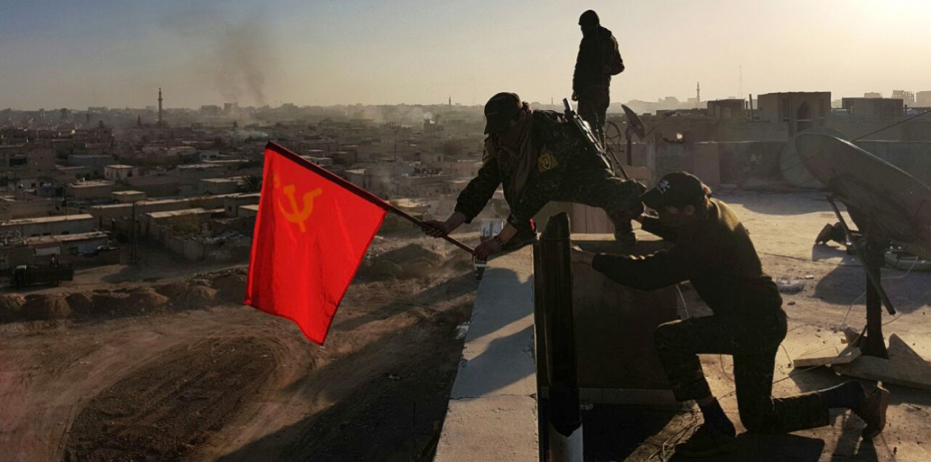
The raising of a soviet flag in the Syrian city of Raqqa Source: https://external-preview.redd.it/vFh4-62I3K04F-sgB3qwrxFytHBqY3hK-9BpFYFZbXU.jpg?auto=webp&s=3b37f8dab75a94068502729d08f518d10ae26cbd
To the IFB the photograph represent victory over the evil of facism and as the flag over the Reichstag represented victory over the Nazis the flag in Raqqa to them represents a victory over the Fascism of ISIS [5]. In that regard the Flag raising of the Soviet flag fits into larger trends namely the appeal of experience [7].
This photographic reproduced advances the perception of a continuing tradition of Communists working as liberators. When questioned in regards to the photo these sentiments among IFB members become even clearer “When the red flag flew over Berlin, it was the symbol of victory over nazi-fascism. We consider Raqqa to mean the defeat of Isis-fascism and ourselves to be in the same communist tradition as the liberating troops.”[5]
However, from the perspective of the USA (and many others in the Western block) the image of the communist hammer and sickle on the Reichstag must have seemed an image of two evils: the dying evil of Nazi Germany and the raising evil of the Soviet Union.
We can see this image, showing Soviet Victory over, and the evil it evoked to the Americans, as contributing to the American decision to use the only two nuclear bombs ever used in warfare [2], in Hiroshima and Nagasaki, as a display of strength in the face of their greatest rival, the Soviet Union. Yet this act can be interpreted as evil as well.
Contemporary Controversies
As the power of the Nazis waned and the cold war started with the raising of the iron curtain and the division of Berlin the image of the Soviet flag over the Reichstag would have taken on a whole new meaning, a symbol of a race lost…. as well as a symbol of the division of Berlin, and by extension Europe and the world, into the Eastern block and the Western block, separated by an ‘iron curtain’. Thus it was in the wake of the Cold War that the Soviet flag became to many a symbol of evil in a new way.
This can be seen within contemporary spaces where the Soviet flag no longer commands the political power it once did, it still conveys it. To some it represents liberation and equality but to others it still represents the great other of the Cold War as well as a great evil.
An example of the complex space in which the Soviet flag now sits, its raising at the funeral of a man who had been a communist in Stalybridge, in England in 2019 [6]. From the perspectives of the family it was honoring a relative but to the wider population of the town and wider society it was a brought forth feelings of dismay and outrage [7].
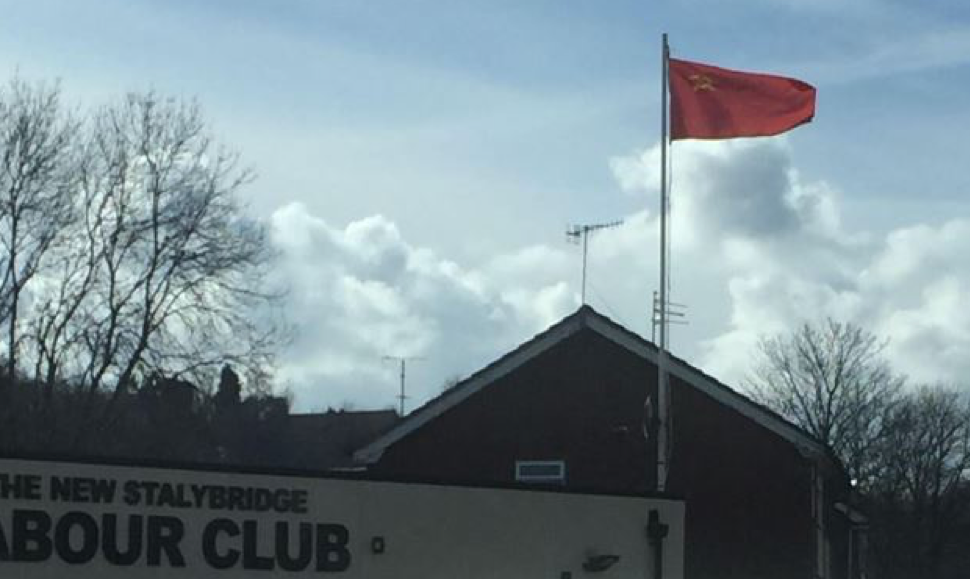
The controversial raising of a Soviet flag at a funeral in Salybridge England. Source: https://twitter.com/guidofawkes/status/972131282644856834
The outcry on social media echoed these sentiments within the population as many considered it inappropriate, following a recent suspected Russian involvement in a nerve gas attack on a journalist. This is due to the intrinsic link the Soviet flag has to Russia, and by extension its connection to the suffering inflicted on people by the Russian state.
The ideas surrounding the two evils present in the photograph of the raising of the flag over the Reichstag have not remained static through history. Rather they have be reshaped by time and by space.
In contemporary Russia the photo is a symbol of righteous revenge, and victory over Nazi Germany. For the USA its meaning has shifted, with the raising of the Iron Curtain and the pressures of the Cold War to come, as a former ally became their greatest enemy. A two very different ideologies clashed, for the USA the Flag of the Soviet Union became an evil as great as the evil incapsulated by the Reichstag itself.
References
- Wallerstein, I., 1993. The world-system after the cold war. Journal of Peace Research, 30(1), pp.1-6.
- Sherwin, M.J., 1995. Hiroshima as politics and history. The Journal of American History, 82(3), pp.1085-1093.
- Hicks, J., 2017. A Holy Relic of War: The Soviet Victory Banner as Artefact. Remembering the Second World War, pp.197-216.
- Tony, L.T.M., 2013. Race for the Reichstag: The 1945 Battle for Berlin. Routledge.
- Oak, G. 2018. A red flag over Raqqa. The Morning star retrieved from: https://morningstaronline.co.uk/article/red-flag-over-raqqa
- Bugby, T. 2019. Family explains flying of Soviet flag in Stalybridge retrieved from: http://www.stalybridgecorrespondent.co.uk/2018/03/10/family-explains-flying-of-soviet-flag-in-stalybridge/
- Kleinman, A. and Kleinman, J., 1996. The appeal of experience; the dismay of images: cultural appropriations of suffering in our times. Daedalus, 125(1), pp.1-23.
Selling Che: the commodification of a communist icon
Written by Jayden Glen, for an assignment on ‘communicating, consuming, and commodifying evil and suffering’, in ANTH424
Images are powerful. They can inspire fear, love and even sadness. As the common saying goes, ‘a picture is worth a thousand words’. But images can be manipulated out of their original context, and be used to enforce values against their original intention, as shown by the commercial circulation of images of Che Guevara.
Giving Context to the Iconic Image
The Guerrillero Heroico or the “Heroic Guerrilla Fighter”, is an iconic photo of Che Guevara, an Argentine Marxist revolutionary from mid 1900’s Cuba.
Guevara fought for communism in Cuba, becoming a strong symbol of the revolution. He remains controversial because of the many extreme measures he took in this fight, despite being widely revered. This iconic picture of him was taken by Alberto Korda on March 5th 1960, during a funeral service for lives lost as a result of the explosion of a munitions freight boat.[1]
The photographer was, at the time, working for the Cuban newspaper Revolución. Koda explained that he was struck by Che Guevara’s powerful expression, a stare over the crowd that showed “absolute implacability”, anger and pain.[1] The newspaper never printed this photo in its coverage of the service, but Koda held on to the portrait in his own studio.[1]
It become “viral” in 1967 when Koda gave two prints to an Italian, who published it for the Cuban government. The photo then began to show up all over the world – particularly in magazines and newspaper, and then in popular culture, such as the colour poster done by Irish artist Jim Fitzpatrick.[1]
Che’s later execution in October 1967 cemented his place in history, and this photo in particular would immortalize Che in popular culture too.[1] But I argue that the commercialisation of his image is itself evil, as it goes against the morals that he embodied.
The evil nature of commodifying Che
In popular culture Che Guevara’s face has become a symbol for “the power of individual expression”, reinforcing ideas of resistance to conformity and oppression.[2] These ideas resonated with many people and groups at the time, and continue to do so today. In fact, stylised as it often is into a stencil/pop-art look, as a cultural artefact the “Heroic Guerrilla Fighter” has become one of the most popular and marketable images of all time.

Screenshot of some of the merchandise available from www.thechestore.com, where as we can see Che Guevara’s image and other images of communism being used for profit.
Many (though not all) people may purchase these items because they share a degree of resonance with Che’s political philosophies. But the irony is that “Che would have used the royalties from any such commercial ventures to destroy the social and economic system that produced them”.[2]
The mass consumption of Che’s imagery, I believe, is reflective of what is termed “disordered capitalism”, a term used to describe how aspects of morality and politics are now intertwined with the commercial.[3] This is most observable is in the commodification of suffering, where “experiences of atrocity and abuse” have become highly profitable. This applies to the marketization of Guevara’s image primarily because his global profile occurred after his death – via execution. The significance and viral popularity, implicitly references this.
Che devoted his life to fighting against a capitalist system that in his view was significantly destroying the way of life of poorer people. As well as making money off his martyrdom to this cause, commodification of his image ignores the pain and suffering he endured through his revolutionary campaign while alive, and ignores the suffering of the people he fought for.
From an anthropological lens, this is also a case of global and local systems interacting. The image is consumed by global ‘fans’ and profited on by companies in many other countries. But the sale of his image undermines the political and ideological value that he has as a symbol to Cuban citizens in particular. The commodification of his image shows an attempt to disempower his communistic ideals.
In their analysis of suffering and its representation in media, Kleinman and Kleinman discuss suffering as “one of the existential grounds of human experience”.[3] But in a saturated media age, they argue that North American society has become de-sensitized to images of trauma.[3] Moreover many engagements with the suffering of others, via the media, are as part of a commodified system where cultural capital is gained through the presentation and circulation of trauma stories. So much so that complicated stories are reduced “to a core cultural image of victimization”.[3] Stories like Che Guevara’s become lost in an over saturation of his image, and other images of suffering – removed from context and significance, now bearing cultural and economic capital but losing moral and political potency.
A moral use of images
Frosh’s (2018) work on the way a sense of moral obligations can shape public interactions with stories and images of suffering, can help further unpack the complexities of commodifying and consuming Che Guevara’s image. In his study of Holocaust survivor testimonies, Frosh [4] reinforces that through the production and consumption of these testimonies through digital sites, individuals express and experience a “moral obligation to the past and to the dead”.
Can the same be said of Che Guevara? Should there not be a moral obligation to preserve the mindset and values of this deceased man? If so, should it be via consuming his image as a product, or by refusing to?
There are other reasons of course why this image may be rejected. Che is controversial because while he was viewed by a freedom fighter and hero by Cubans oppressed by the capitalist system of the time, he was also seen as a violent extremist and dictator: in the pursuit of revolution and freedom.
While there are many valid arguments against the man himself as, it is important to stress that even men perceived as evil can generate genuine love and admiration from people. Che is treated with and regarded as a Saint in some parts of the world due to his fight against oppressive and demeaning forces of capitalism – for example in Bolivia, where many worship him as “Saint Ernesto”, or in Cuba, where residents of Havana worship and pray to “Saint Che” by lighting a candle.[5]
As well as obligations to the dead, Frosh talks about obligations to the witness-survivor. In relation to Che Guevara, this could be examined in relation focused toward those that continue to praise and revere Che as a central part of their political ideology, and their real and personal history – in Cuba in particular, but also further afield.[4] This includes those who fought with him and for his cause, and continue to today. It includes intellectuals, workers and students.
We can apply Frosh’s idea to highlight a moral obligation to those living people connected to Che Guevara – those that remember and revere him. Including those Cubans that Che attempted to save as they were belittled and demeaned by an oppressive capitalist system. How would this additional layer of obligation be enacted, in our engagement with this image?
Concluding (and condemning)
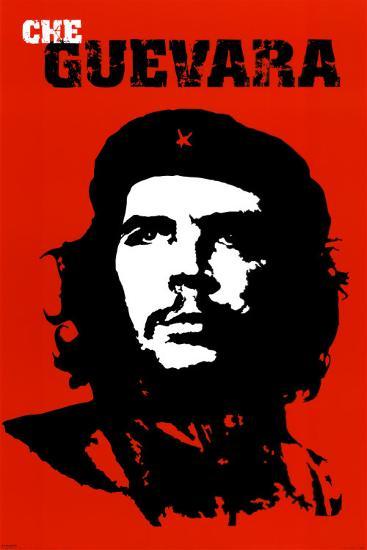
Image retrieved from: https: //www.allposters.com/-sp/Che-Guevara-Posters_i1181_.htm accessed 8/4/19
Che Guevara was (and is) a controversial and influential figure. In examining the use of his image I have demonstrated the complexity of moral engagements with iconic political images such as this.
As a man he fought against capitalistic ideals, and has become a cultural icon. As a cultural artefact, his image on merchandise becomes a site of contention considering the moral obligations we not only have to the dead but also the living.
While debate about the evilness of Che the man remains prevalent, I conclude with the assertion that the capitalistic capture of his image for monetary gain is truly evil regardless.
References
[1] Meltzer, S. (2013). The extraordinary story behind the iconic image of Che Guevara and the photographer who took it. [online] Imaging-resource.com. Available at: https://www.imaging-resource.com/news/2013/06/06/the-extraordinary-story-behind-the-iconic-image-of-che-guevara [Accessed 11 Apr. 2019].
[2] McCormick, G. (1997). Che Guevara: The Legacy of a Revolutionary Man. World Policy Journal, [online] 14(4), pp.63-79. Available at: https://www.jstor.org/stable/40209557 [Accessed 26 Mar. 2019]. [64]
[3] Kleinman, A. & Kleinman, J. (1996). ‘The appeal of experience; the dismay of images: Cultural appropriations of suffering in our times.’ Daedalus, 125 (1): 1–24. [8; 1; 9; 10]
[4] Frosh, P. (2016) ‘The mouse, the screen and the Holocaust witness: Interface aesthetics and moral response’, New media and society. Sage Publications, 20(1): 351–368 [ pg.353]
[5] Lazo, O. (2016). The Story Behind Che’s Iconic Photo. [online] Smithsonian. Available at: https://www.smithsonianmag.com/travel/iconic-photography-che-guevara-alberto-korda-cultural-travel-180960615/ [Accessed 11 Apr. 2019].
The Smell of Suffering: Portrait of a Street Boy
Written by Yi Li, for an assignment on ‘communicating, consuming, and commodifying evil and suffering’, in ANTH424
Street photographers visualise social suffering through their artwork. They engage (themselves and us) with unfamiliar experiences: shrinking cities, strange portraits. Photographers can function as both moralists and anthropologists. They are often spectators, often self-exiles – presenting a version of evil for others to interpret, but often also fulfilling their own sense of moral obligation.
My argument is that both the positionality of the street photographer, and the medium of the photograph, means that photos sometimes break free from the time and space, conveying a universalism of personal adversity. I use an example of street photography of homeless in Moscow to discuss this.
Down and Out
German photographer Miron Zownir is one of the most radical contemporary examples. His focus on marginal characters and the dark side of cities is rooted in his childhood. A Ukrainian-German who grew up in post-war Germany, Zownir as a teenager immersed himself in Eastern European literature without trusting any existing political systems or social stereotypes. His inherent interest in individualists inspired him to live in slum-like places, capturing streets with an anti-establishment attitude.
The street portrait is from Miron Zownir’s publication Down and Out in Moscow, a series of images that captured the homeless crisis in the Russian capital in 1995, after the collapse of the Soviet Union in 1991.
I noticed the smoking boy with an adult expression to his cynical appearance when I first came across it in 2018. It is somehow different from the other challenging photos in his book. Momentarily, the encounter between Miron Zownir and the boy constructed a story about how individuals were abandoned by society. The diffusing cigarette smoke in front of the boy seems to allow me to smell the evil that permeated the city.
Kleinman & Kleinman (1996)[i] discuss the moral implications of photographs, through contextualising engagements within creators, audiences and images.
Zownir’s photographic experience runs through the technical transition: turning from black-and-white film to digital photography in the post-modern era. This photo was captured in a classic form, of black and white portraiture displayed in gallery spaces, and print journalism (books, and magazines). But it is worth noting that the extended agency of photographs can shift, depending on medium, from a momentary, regional realm to a worldwide standing discussion, through different forms of reprinting and representing.
How different would the viewers experience of this boy’s suffering be, scrolling past a small version in a social media feed? Touching his face on a tablet?
Moral Obligation in Street Photography: Unperceived Suffering as Social Experience
Anthropologists may ask: what is the basis of a photographer’s sense of moral obligation to take photos on streets?
Street photography concentrates on people and their behaviour in public, thereby also recording personal history: though without formal consent, and with the combination of spontaneity, outsider perspective, and private exploration. These subjects of circumstances are generally unaware – either stared at or ignored until they were documented. Street photography uses these collected narratives to define cultures or places, with no duty to serve a larger whole, and no limitation on how they reconstruct these places[ii].
Kleinman & Kleinman considered that photographers represent individual suffering as part of social experience, for others to access – whether these are extreme or ordinary forms of suffering. But as anthropologists, they caution that “there is no timeless or spaceless universal shape to suffering,” (1996, p:2).
In Down and Out in Moscow, Miron Zownir photographed death, sin, and a harsh lived reality. Underlying the powerless state, the rampantly violent proliferation pushed Moscow to become a hotbed of criminal forces in the 1990s; “the most aggressive and dangerous city, … people were dying right there on the street”.[iii] Such tension immediately changed Zownir’s original mission: to document Moscow’s nightlife with three-month project funding from a photographic committee.
Suffering is one of the existential grounds of human experience, and Kleinman & Kleinman suggest that moral witnessing also must involve a sensitivity to others, albeit with unspoken moral and political assumptions. Still functioning as a photographer, Zownir did not tend to query the government, or alter Moscow residents’ condition – but instead chose to live briefly in this shadowed twilight zone, to experience the nightmare.
Individual into the Universal: Reflexive Appreciation against the Silent Oblivion
How can we perceive a stranger’s suffering as universal? Here, a street boy’s sophisticated body language is beyond verbal expressions: dressing in a suit over a horizontal striped turtleneck sweater, his hands are hidden in his pants pockets like a social youth. He looks indifferent to the surroundings and unmoved by the photographer. He is clothed, unlike many beggars, and yet he was banished to a community where no-one had a home.
This portrait reminded me of the 1994 film In the Heat of the Sun. The film is based on Chinese writer Wang Shuo’s novel Wild Beast, which is set in Beijing during the Cultural Revolution, and tells how a teenage boy and his friends are free to roam the streets day and night in a period in which all the social and educational systems are extremely non-functional. Both protagonists are undergoing suffering – the film an example of the way their individual experiences can be abstracted and universalised, for the consumption of a wide variety of audiences. Yet this this also shows us how images and films can provide an insight into personal suffering that is usually invisible – although the harsh realities behind the lives they represent often go on unchanged.
The unwitting suffering of Zownir’s street boy is entangled with the political unrest in Moscow. But as a photograph, it also exists apart from the historical context: “a professional transformation of social life […] a constructed form that ironically naturalised experience.”[iv]
The frame itself cannot communicate this context. Yet it can communicate something else – the universality of human feeling event amidst diverse and ethically incommensurable [v] societies. Perhaps this is the power of portraiture – indeed the seminal psychological research of Ekman, and others, has asserted that emotional expression on faces is universal [vi] – meaning that moods and feelings may at times transcend cultural limitations, an idea often grappled with in the anthropology of emotion.
Conclusion: photography as a container of truth and imagination
Miron Zownir wrote in his poetry: When the earth returns with a thousand sunsets, the truth of the universal is darkness.[vii]
Photography blurs social facts, but seals emotions. Whether the boy would recognise the chaos, ignorance and madness that Zownir’s book communicates, in his free childhood in post-collapse Moscow, cannot be known. Yet seeing this photo as a cultural artefact, we can recognise that both the photographer and the audience as complicit in reproducing and politicising fragmented histories in photography. The photograph becomes a container for these forms of imagination.
Several years later after this photo was taken, when Miron Zownir was back in Moscow for his upcoming exhibition, the city’s exterior had been cleaned up. The silent responses of audiences standing in front of an enlarged version of this photograph, seemed at a vast remove from its original context. What meaning, what comfort, did it hold then? Yet the world still calls for images, as ‘the mixture of moral failures and global commerce is here to stay’ (Kleinman & Kleinman 1996: p. 7).
References:
[i] Kleinman, A. & Kleinman, J. (1996) ‘The Appeal of experience; the dismay of images: cultural appropriations of suffering in our times’, Daedalus. American Academy of Arts & Sciences, 125(1), pp. 1-23.
[ii] Levy, S. (2019) ‘Street photography as a process’ in Lens Culture Guide to Street Photography, pp. 8-12
[iii] Zownir, M. (2014) ‘I was always an individualist’, Berlin Interviews, by Katerina, http://berlininterviews.com/?p=1375.
[iv] Kleinman, A. & Kleinman, J. (1996) ‘The Appeal of experience; the dismay of images: cultural appropriations of suffering in our times’, Daedalus. American Academy of Arts & Sciences, 125(1), pp. 1-23.
[v] Fassin, D. (2009) ‘Beyond good and evil?: Questioning the anthropological discomfort with morals.’, Anthropological Theory. Sage, 8(4), pp. 333–344.
[vi] Ekman P, Friesen W (1976). Pictures of Facial Affect. Consulting Psychologists Press : Palo Alto.
[vii] Zownir, M. (2018) ‘Black’, Vision
A crash course on the anthropology of evil
Dr Susan Wardell teaches a course called ‘The Anthropology of Evil’ (ANTH424). Last week she responded to the Christchurch mosque shootings with a twitter thread, drawing on course content to ask pointed questions about social patterns of sense-making in New Zealand, and in the media, in the wake of the attack. The full (19-point) thread is available in the link below, and also pasted as text below
https://twitter.com/Unlazy_Susan/status/1107760378694385664
Crash course: I teach a paper called ‘The Anthropology of Evil’ at @Otago. It just got very real. This thread will unpack some ideas from the course in relation to the #ChristchurchTERRORISTattack. Questions, not answers. #anthropology #anthrotwitter #ChristchurchMosqueAttack [1]
When the world is shattered, human meaning-making kicks in fast. We try to ‘locate’ evil within existing worldviews, including theological, secular, and academic. We collectively ask what/who/where, & WHY?! This gives us the social resources to assign blame, prescribe action. [2]
What is ‘evil’? An inherent quality of a person? Their intention/motivation? The action itself? The consequences of the action? Watch how the media and legal system frames this for #ChristchurchTerrorAttack. And what about a white supremacist who has never committed violence? [3]
What role can social scientists play in responding to the #christchurchtmosque attack? Should we be thoroughly analysing moral topics, whilst bracketing our own views (Fassin 2009), or formally taking sides, being politically engaged (Scheper-Hughes 1995) #anthrotwitter [4]
Does social science have a language appropriate to representing suffering? Is this thread itself unethical, in its stilted, theoretical removal from very real pain, grief, loss of the #ChristchurchMosqueShootings? How should we analyse atrocity without being reductive, cold? [5]
I’ve seen many posts arguing against learning the terrorists name and background because they don’t want to ‘humanize him’. It’s easy to create a ‘monstrous’ other. Monster = not human. But he is a human. That’s scarier to acknowledge. HE is us, as well as ‘they’ are [6]
The terrorist is described as ‘evil’.”‘Evil’ is part of the vocabulary of hatred, dismissal, or incomprehension” (Morton 2004). SHOULD we seek to understand the lives, worlds, & thinking of white supremacists? Are condemnation & understanding incompatible? [7] #anthropology
How are we fitting the story of the #christchurchmosqueattack into existing, familiar narratives? What is the risk? Yesterday a student & I bet that we would soon see references to mental illness – a common narrative for white male violent offenders. Came true within hours. [8]
What elements of news about the #christchurchmosqueattack have affected you most? I’m going to guess it’s the images. Images are sometimes seen as a more authentic language for pain than words, but also function to ‘frame’ complex realities. Reflect on the ones you’ve shared [9]
Kleinman (1996) warns that mass media circulation of images means suffering can be “remade, thinned out, distorted”. Susan Sontag saw photography as ‘predatory’. Let’s think about: who took the images and why? Who is sharing them, and why? Who is in them, and who isn’t? [10]
Frosh (2016) discusses digital morality: the cursor as a proxy moral compass. What do we click on, or watch, & why? A sense of obligation to ‘witness’ tragedy? Empathetic hedonism? (Recuber 2016, also see: https://blogs.otago.ac.nz/inplural/wp-admin/post.php?post=122&action=edit … ) What would it mean to NOT watch/view/click? [11]
Lots of discussion about what NOT to view (the manifesto, the livestream). Calls to give attention to victims, not perpetrator. We are exercising agency, within the ‘attention economy’ of social and mass #media. Capital-driven systems, but with room for resistance. [12]
What makes something or someone LOOK evil? How are particular features of particular bodies, coded as evil? Places and objects can also take on strong (through fluid) meanings, and emotions. What have mosques symbolised in NZ in the past? Now? What about the hijab? Guns? [13]
A typical terrorist tale involves a villain who has infiltrated a community, but is an outsider (Loseke 2016). Does the fact that the #christchurchmosqueattack terrorist was an Australian, change how NZ will address its own racism? Do we still get to be the ‘goodies’? [14]
How does hate come to circulate around specific people, bodies, or identity markers? Sara Ahmed (2004) writes is not not just part of ‘extremism’ and crime, but is a “product of the ordinary” Hate crimes do not just involve visceral power, but broader structures of power [15]
‘Banal’ evil refers to everyday, complicit, thoughtless evil (not sadistic malice). Is racism in NZ like this? Is racism part of ‘structural evil’: the longstanding formal (legal/bureaucratic/political) systems that discriminate and harm through their normal functionality. [16]
It’s through the cultivation of collective emotions that people come to FEEL, to BELIEVE in the imaginary social unit called the ‘nation’. In NZ’s past, who has been ‘othered’ to build a stronger sense of ‘us’? What does it mean to now say ‘they are us’, & is it enough? [17]
There has been talk about lack of Muslim voices even in the mainstream media coverage of the #ChristchurchTerrorAttack. Testimony has a power not despite, but BECAUSE of subjective experience. When Muslims say they are shocked, broken, but not SURPRISED, are we listening? [18]
Silence can help diagnose power. We must pay attention to silences, gaps in narratives, forgetting, vagueness, or selective remembering, about our own history, including the many instances where white supremacists acted publicly in NZ before this, as pointed out in a blog post by Catherine Trundle (an anthropologist from Victoria University, Wellington): https://bit.ly/2TIJ4Ti [19]
Fire and Flood: Grounding disaster, trauma, and emotion
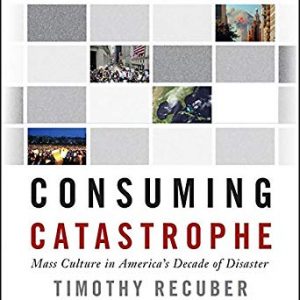 I recently read Sociologist Timothy Recuber’s (2016) book, Consuming Catastrophe: Mass Media in America’s Decade of Disaster. It is a great book, and I loved it particularly for acknowledging that media is not just informational, but involves aesthetic and performative cues for emotional response. Recuber draws on case studies of 9/11, and Hurricane Katrina, among others. His writing is specific to the USA and acknowledges its scope as such.
I recently read Sociologist Timothy Recuber’s (2016) book, Consuming Catastrophe: Mass Media in America’s Decade of Disaster. It is a great book, and I loved it particularly for acknowledging that media is not just informational, but involves aesthetic and performative cues for emotional response. Recuber draws on case studies of 9/11, and Hurricane Katrina, among others. His writing is specific to the USA and acknowledges its scope as such.
As an Antipodean social anthropologist, I am struck by the need for a cross-cultural and de-centred lens on these topics. There is space for ethnographic studies that highlight the locally situated nature of disaster and disaster-response – the way the narratives, symbols, words and meanings that make sense of catastrophes around culturally grounded and particular,
Black Saturday: reviewing art on the anniversary of disaster
 Last week I attended a talk by Dr. Grace Moore, called ‘The Art of Recovery’. Before moving to Otago’s English Department, Dr Moore worked with the ARC (Australian Research Council) Centre for Excellence for the History of Emotions, her research focussing on fire in Australian historical writing and art. But timing and location meant her response also engaged heavily with the devastating Victorian bushfires of ‘Black Saturday’, in 2009. On this 10-year anniversary of the event, she presented some pieces from a collection of art created by survivors.
Last week I attended a talk by Dr. Grace Moore, called ‘The Art of Recovery’. Before moving to Otago’s English Department, Dr Moore worked with the ARC (Australian Research Council) Centre for Excellence for the History of Emotions, her research focussing on fire in Australian historical writing and art. But timing and location meant her response also engaged heavily with the devastating Victorian bushfires of ‘Black Saturday’, in 2009. On this 10-year anniversary of the event, she presented some pieces from a collection of art created by survivors.

William Strutt’s oil painting ‘Black Thursday’ (1861). Referencing the largest fires ever recorded in Australia, taking place in Victoria 1851.
Dr. Moore’s work makes some fascinating comparisons between this, and 19th century European colonists’ narratives and paintings of bushfire. As such she has been able to highlight some of the moral frameworks and social relationships (i.e. heroism, mateship) that have made sense of bushfires in a culturally-specific way. She notes also that there is a rich tradition of depicting fire among many indigenous Australian communities, which would beg deeper research.
The connection between Moore’s talk and Recuber’s book struck me, in that both addressed representations of disaster (and its aftermath), and also that both discussed the role of emotion and affect as they circulated through particular mediums of communication.
Emotion and trauma: inside, outside, on the page and screen
In Dr. Moore’s talk at the Dunedin Public Art Gallery, art was framed as something used to ‘confront’ and ‘work through’ trauma. It is ‘cathartic’, and ‘therapeutic.’ The vested interest in such processes, after trauma, is not entirely individual. Amidst controversy about accountability and the inadequacies of long-term support, Grace noted the investment of local government in programmes that allow people to ‘channel their emotions’.
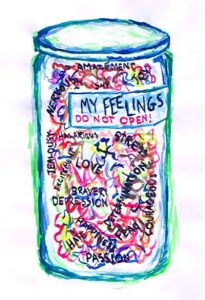 I could also say a lot here, from an anthropological perspective, about the culturally-grounded metaphors of emotion that this all relies on, and in particular the hydraulic metaphors of emotion. These are central to psychodynamic frameworks that emphasise the destructive potential of un-expressed (‘bottled up’) emotions, and the moral and therapeutic values of sharing (‘venting’) emotion.[i]
I could also say a lot here, from an anthropological perspective, about the culturally-grounded metaphors of emotion that this all relies on, and in particular the hydraulic metaphors of emotion. These are central to psychodynamic frameworks that emphasise the destructive potential of un-expressed (‘bottled up’) emotions, and the moral and therapeutic values of sharing (‘venting’) emotion.[i]
I have also written about the distinction between ‘channel’ and ‘vessel’ metaphors of emotion.[ii] In this case I think it is the intersubjectivity of affect that the frequent appearance of ‘channel’ metaphors hint at. They highlight art as not only a personal process but a relational one, a channel for survivors to connect with other people who were not present, across what is often framed as an ineffable void of experience.

Image from the DAX Centre. Source: http://castlemaineart.com/artists/konii-c-burns/konni-c-burns-dax-centre/
Alternatively perhaps the art itself is the vessel, the receptacle, which holds the emotion channelled into it. Indeed Moore noted that emotion and memories are “embedded” into the work. Regional exhibitions focussed on ‘Recording and Collecting Black Saturday’ and the longer-term efforts of DAX Centre to collect these works (and others by victims of broadly-defined ‘trauma’) could be analysed through this lens. It certainly opens up some interesting questions:
- Do these paintings and sculptures represent the materiality of suffering?
- What then, is the political or moral impetus to hold it and preserve it? To communicate it? To view, experience, or consume it?
There is considerable work still to be done examining the ‘moral economy’ of disaster communication: in mass media, and social media. Recuber’s book includes some particularly interesting work on the ‘digital archives’ that formed around the 9/11 and to Hurricane Katrina. It occurs to me that these, and the exhibitions and collections Dr Moore on, can be seen as a deliberate (and ‘high culture’) institutionalisation of the spontaneous shrine that is increasingly a mark of postmodern collective grief.[iii]
Drawing close to the flame: Empathy and its limits
Recuber talks about the ‘aura’ disaster has; the ‘haunting traces of the real’ that it leaves (p16, 26, 90). Are these possible ways to understand the social practice of collecting and preserving ‘trauma’ art?
Recuber’s idea of ‘empathetic hedonism’ also recalls itself here– “in which the desire to understand the suffering of others is pursued doggedly, through always necessarily unsatisfactorily.” (p9).
Recuber notes particular kinds of ‘stylized and idealized’ empathy evoked by mass media coverage of disaster in the contemporary USA (p19). Once again I believe comparative attention to locally situated forms of empathetic engagement in other places would be beneficial. There are undoubtedly some differences, for example, between the capitalist performative merchandise Recuber describes around the Virginia UniTech Shooter, and the patterns of charity, volunteerism, and witnessing/spectatorship specific to Black Saturday.
Stories (including Dr Moore’s own) of watching weather changes in nearby cities create what appears to me to be a distinctive, embodied, and locally-grounded experience of witnessing, mediated by the sight, smell, and taste of smoke.
In examining art made by children’ affected by the Black Saturday bushfires, Moore also poignantly highlighted the way their experience was often mediated by windows – in cars, as they fled, or in schools where they lived with constant view of devastation after the event. Windows featuring in art are indicative of “intensity, shielding, seeing” she points out. This alludes to a bigger question in the communication of catastrophe – the value (and risk) of seeing. Of empathy itself. The question of vicarious traumatisation.
In my own work with youth workers in Canterbury, after the Christchurch quake, metaphors not only of vessels and channels, but also of boundaries, were common in the stories of care, emotional labour, burnout and compassion fatigue I recorded.

Moore’s talk, I noted, included art by one psychologist who counselled survivors of Black Saturday and framed her art around experiences of “emotion oozing red and sad”. The ‘contagion’ model of emotion is heightened when it is extremely traumatic circumstances in question.
Sometimes keeping the channels, the windows, ‘open’ is experienced as dangerous, overwhelming, even when there appears to be a moral imperative to do so. Other times the desire to draw closer to disaster seems to overcome the distance that is safety. But all of these responses occur in situated local worlds – with their own history, their own geography, and their own socio-political contexts, as Recuber and Moore variously highlight.
In emphasising context and comparison, the anthropological lens has value here too. I am eager to see more work that ‘grounds’ disaster, and the communicative practices it generates, in this way.
Written by: Dr Susan Wardell
References:
[i] Lutz, C., White, G.M., 1986. The Anthropology of Emotions. Annual Review of Anthropology 15, 405–436. https://doi.org/10.2307/2155767
[ii] Wardell, S., 2018. Living in the Tension: Care, Selfhood, and Wellbeing Among Faith-based Youth Workers. Carolina Academic Press.
[iii] Magry, P. & Sanchez-Carretero, C. (2007) ‘Memorializing Traumatic Death’, Anthropology Today, 23(3): 1–2.

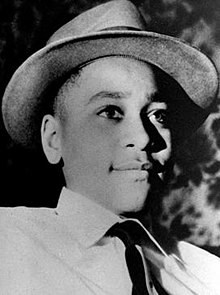

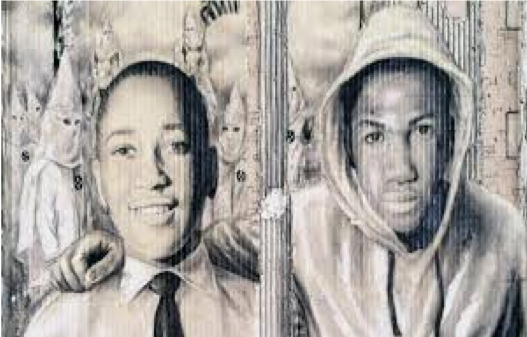
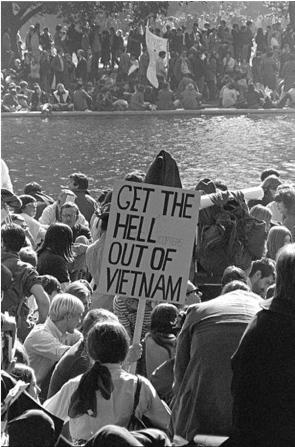

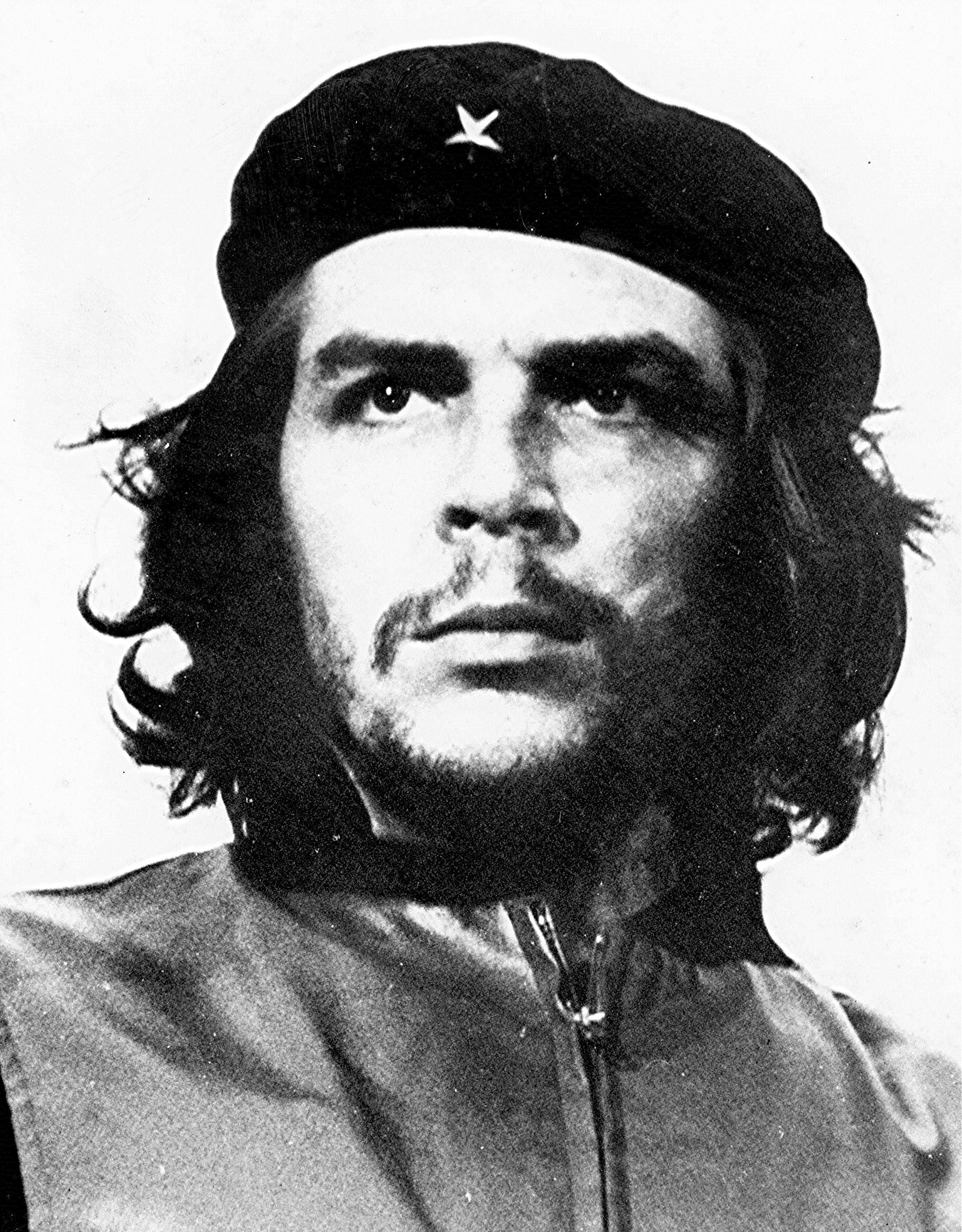
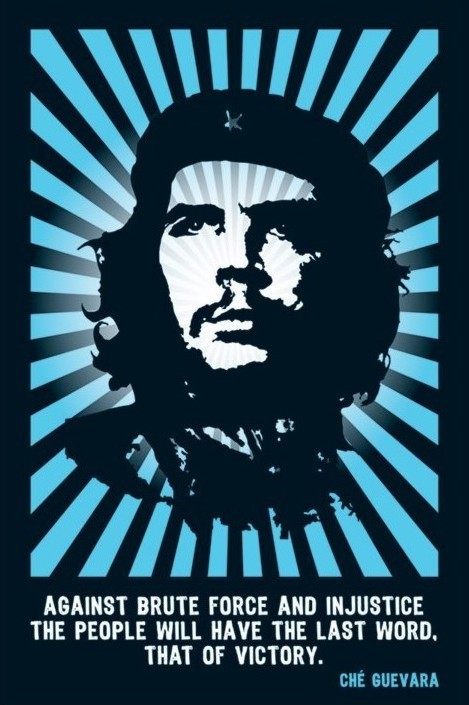
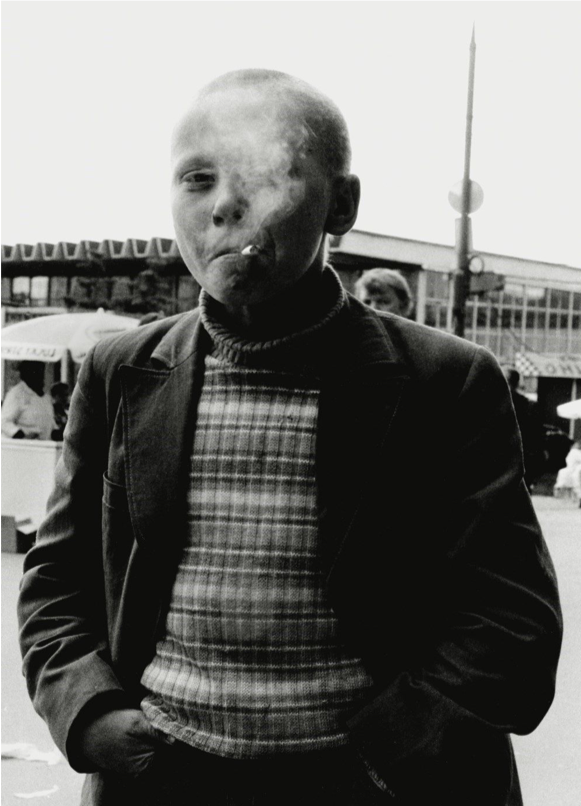
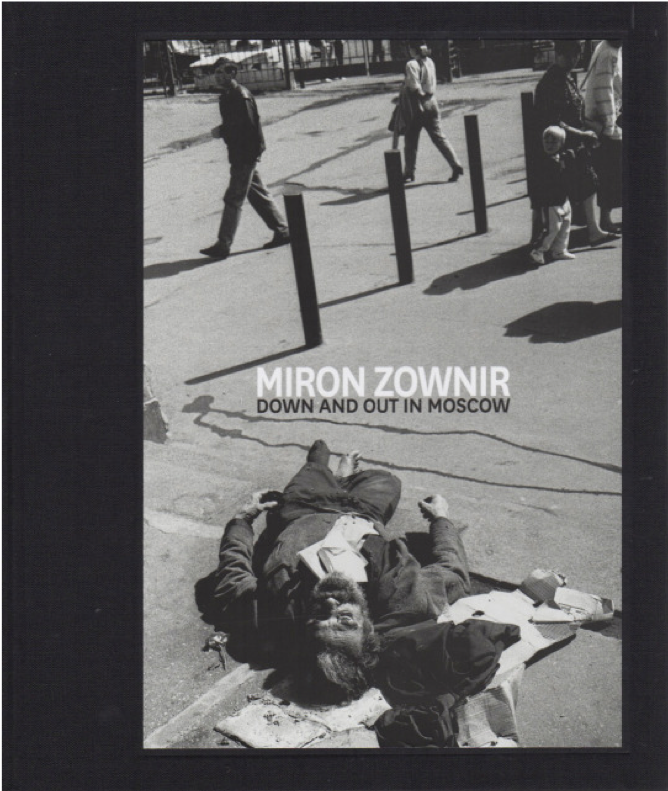



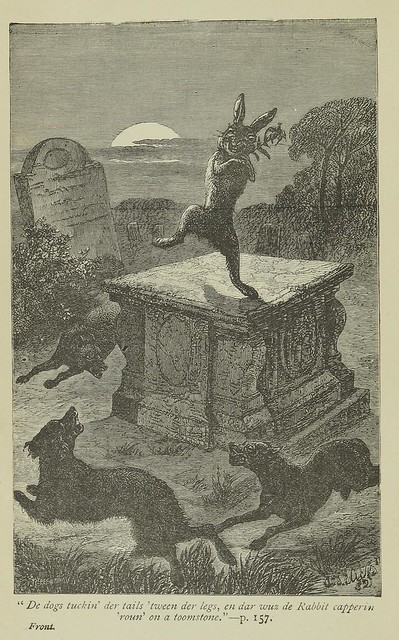
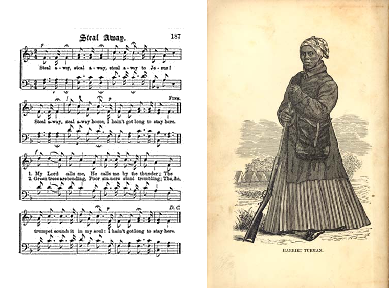
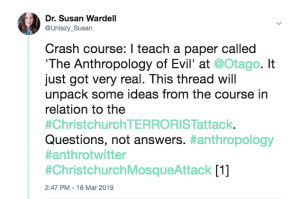
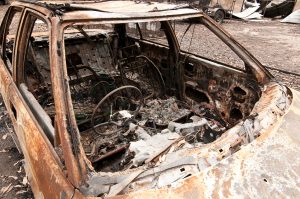


Healing the Self: Motivational Speakers as Shamans
Posted on by smisu13p
Written by: Emma Gamson
[Adapted from an essay written for ANTH228/328: Anthropology of Religion and the Supernatural]
Motivational speaking is a category of verbal performance where the goal is to inspire or motivate an audience 12. Motivational speakers tend to share self-narratives, to convey messages of hope, reassurance and success 8. There is no training or certification required; success depend on an individual speakers’ popularity 8, 9.
Tony Robbins is a highly influential motivational speaker whose messages focus on empowerment, self-transformation and “unleashing the inner-self” 14, 7.
Tony Robbins presents his talk ‘Why We Do What We Do’ at the February 2006 TED conference. The image shows Robbins open and powerful stage presence as he addresses as audience. Source: https://www.ted.com/talks/tony_robbins_asks_why_we_do_what_we_do
This post analyses some of Robbins’ performances, to argue that motivational speaking can be understood as a type of healing practice. I apply concepts from the anthropology of religion, such as liminality, communitas, and ritual, to understand how he frames the self, how he establishes legitimacy, and how he enacts healing.
Narrating your self into (a new) existence
Understandings of the ‘self’ varies cross-culturally. Greek philosophers Plato, and later Descatres, as well as much of early Christian thought, supported a dualist view of the person, in which the body is a physical, mechanical and matter of science, and the mind (in which the person or ‘self’ resides) is non-physical, spiritual and a matter of the church 16, 17. Conversely, Freud, Foucault, Sartre and Social Sciences have supported a non-dualism in which the self is made up of a body and mind immediately connected to each other, and both are subject to the influence of society and power 16. In anthropology, the ‘self’ is typically associated with the perception of one’s own existence, and is different to ‘identity’, which is more related to how ones existence is placed in relation to others 17.
Robbins uses narrative to convey themes of self-renewal, self-help and power of a true inner self, all of which he claims are controlled by state of mind and worldview 2, 15. His key argument is that “you can sculpt the person you want to be with whatever raw material you have available, so long as you acknowledge the early forces that shaped you” 15.
Processes of self are not just about the mind, but about the body too. In anthropology, embodiment theory emphasises the intimate connection between mind, body and culture (in in fact seeks to challenge these as separate categories, all together). Many motivational speakers also take a holistic view, including Tony Robbins, who treats the mind and body as distinct, but directly influencing each other 15.
Religion, ritual, and self-transformation
Ritual practice is a key feature of religion. Rituals can work to express meaning, and apply religious worldviews to daily life 11. Religious worldviews can form the framework against which individuals develop and create their self-narratives. Religious ritual deeply embeds this frameworks through embodied (implicit) and explicit knowledge of one’s self in the context of the world, consequently influencing how one perceives and acts in the world 11.
Tony Robbins on stage at one of his ‘Unleash the Power Within’ seminars. A three-and-a-half-day event oriented towards helping “you unlock and unleash the forces inside you to break through your limitations and take control of your life”. The image is a snapshot showing Robbins enthusiastic and big gestures that are incorporated into his stage performances. Source: https://www.tonyrobbins.com/events/unleash-the-power-within/
As a motivational speaker, Tony Robbins employs embodied, ritualized action in a way similar to religious practice. His talks verbally lay out a worldview in which individuals have an ‘inner power’. Then his rituals make this true by enacting the ‘unleashing’ of this power with bodily action 8, 15, 14.
Specifically, Robbins his audience to participate through verbal agreement 2, 15. Their vocal articulations are a ritual way of unleashing this power. By getting his audience to respond through an embodied ritual of call-and-response, in his talks and seminars, he is asking them to reposition their own self within this worldview; to re-write their self-narrative according to that. In shifting the framework for their story, he shifts the story and thus the self.
Why does ritual work? Hot coals and big crowds
The effectiveness of Robbin’s performance is contingent on his audience. Religion is a dynamic product of human activity that tends to revolve around a central source of legitimacy or authority, but this must be continuously performed, negotiated, reproduced and validated by participants and audience members 1.
A seminar attendee calmly walks across a path of hot coals, embodying the beliefs and ideas that have been taught by Robbins. Behind cheers him on as they people queue for their turn. Source: http://morewealthandhealth.com/tony-robbins-fire-walk-review-read-fire-walk/
Robbins continuously negotiates and reinforces his authority when he prompt action from the audience. For example, Robbins created a ritualized action of walking over hot coals to show the power of the inner self, which many people have attempted 15. The offer would be absurd if the audience did not reinforce and embody support by actually attempting the walk, thus continuing to reinforce and legitimize the authority of Robbins and his worldview.
One key feature in the effectiveness of motivational speaking, is liminality. Anthropologists understand liminality as an intermediary stage in a ‘rite of passage’ ritual, which typically focuses on shifting someone’s social positionality. Like most motivational speakers, Robbins does indeed emphasizes ‘transformation’. We can argue that he uses his events to create a liminal space in which the possibilities for transformation occurs.
Communitas can be experienced in ‘coming of age’ rituals, rock concerts, sports games, prisons, religious events, and more.
The liminal stage is the ‘in between’ stage, and when lots of people are experiencing this together, it can lead to a state called ‘communitas’. Communitas is a state of anti-structure, where usual social boundaries and identities temporarily fall away, and people feel joined by bonds of common feeling 18. Liminality and communitas can both facilitate, acute moments of self-transformation.
Despite the perception of motivational speaking as an ‘individualistic’ form of healing, communitas appears to emerge again in ritualised acts in which Robbins’ audience participants respond collectively, rather than individually 18. After all, would it work the same if we was alone in a room with someone? His seminars can become a space of communitas – the audience all are temporarily separated from their normal lives, and united with others in their intense experiences in that room. It is together that they are remade.
Healing: is Tony Robbins a shaman?
People attending Tony Robbins talks seek empowerment. It is fair to infer then that they come with some sense of deficiency or disempowerment – while their bodies may be healthy, their ‘self’ is in need.
Religion is one framework of meaning that can help individuals make sense of what it means to have or to lose health, what it means to be lacking or whole10. While not a religion, Robbin’s talks similarly offer a framework of meaning that locate the cause of problems, and their solution, within a particular set of symbols and ideas: i.e. about ‘inner power’ and how to ‘unleash it’, and what effects (on both body and mind) this can have.
A shamanic healing ceremony, showing the jhākri (Nepali shaman) alongside a woman undergoing the healing process. Behind is a group who are also participating in and supporting the ritual (Sidkey 2010, p219)
There are similarities in particular with the way Toby Robbins works, and what anthropologists have observed of some shamanic traditions. For example, Yolmo shamans define health by the aesthetics of balance, wholeness and harmony to determine health 4. These values are embodied in the daily life of Yolmo society, embedding them in the body and shaping sensory experiences of health 4, 5. Shamans may conduct rituals involving trance states with vivid imagery to deal with illness such as soul loss 4, 5. This process not only relies on the action of the shaman themselves, but also through the participation of everyone present, including the patient 4, 5. This exemplifies the dynamic relationship between the authority of the religious healer, the participants and the social embodiment of values as key in making sense of the process of healing.
Tony Robbins seems to define health as a unity between how one lives their life and the cultivation of the power of their inner-self to create fulfilment and wellbeing. For example, in a video Robbins guides Rechaud, a 30-year-old man with a stutter, through a ritualized process of searching through memories for a cause of the stutter and bringing out Rechaud’s ‘inner warrior’ 13. Rechaud emerges ‘healed’ from his stutter and delivers a speech at one of Robbins seminars, acting as a symbol of success for this method of healing, which generated intense emotional responses from the crowd 13.
A stock image under the word ‘healing’. Source: pixabay.com
As with the Shamanic trances, Robbins guides Rechaud through a ritualized process of self-narrative that taps into imagery embedded in memories and in the symbol of the self as a ‘warrior’, to transform Rechaud and unify his inner self with his physical body to overcome the stutter.
Conclusion:
Motivational speakers in Anglo-American nations are not unlike shamans in a variety of other cultural settings – they are a culturally sanctioned form of (non-biomedical) healer, with accepted social authority. In observing Tony Robbins’ techniques, we can see how he uses this authority to lead audiences through rituals that facilitate a shift in self. His motivational seminars become a liminal space in which people are taken through a process of re-making their own narratives according to the framework he lays out, and thus are able to heal body, mind, and ‘self’.
References
Posted in Case study, Media/political commentary, Undergrad coursework | Tagged anthropology, authority, communitas, embodiment, healing, health, liminality, motivational speaking, personal growth, religion, Ritual, self, self-narrative, selfhood, shaman, shamanism, Tony Robbins, wellbeing | Leave a reply